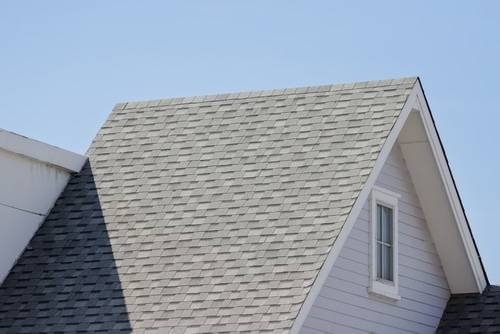Roofing is a critical aspect of any building, but it comes with its own set of hazards. Both homeowners and contractors must be aware of these risks and take necessary precautions. The importance of roofing safety cannot be overstated.
For homeowners, understanding roofing safety is essential when inspecting their roofs for damage or minor roof-related tasks. For contractors, it’s a matter of professional responsibility and legal compliance.
Common hazards associated with roofing include:
- Falls: This is the most common roofing hazard. A lack of fall protection or misuse of safety equipment can lead to severe injuries or even fatalities.
- Tool-related injuries: Improper use or mishandling of tools can cause injuries.
- Electrocution: Coming into contact with power lines or using electrical equipment on the roof can lead to electrocution.
- Heat strokes or exhaustion: Roofing often involves working under the sun. Without proper hydration and rest, workers can suffer from heat-related illnesses.
Understanding these hazards is the first step toward ensuring roofing safety. Both homeowners and contractors must prioritize safety to prevent accidents and ensure a safe working environment.
Essential Roofing Safety Precautions
The importance of proper training and awareness in roofing cannot be overstated. Both homeowners and contractors need to understand the potential hazards associated with roofing and how to mitigate them. This knowledge can be gained through formal training or by staying updated with safety guidelines and best practices.
Training should cover a wide range of topics, including:
- Identifying potential hazards
- Proper use of safety equipment
- Emergency procedures
- Safe handling of materials and tools
Awareness is not a one-time thing but a continuous process. It involves staying alert on the job, being aware of the surroundings, and understanding the risks involved in each task.
Safety equipment is also crucial in ensuring roofing safety. Safety equipment such as harnesses, safety nets, and guardrails can significantly reduce the risk of falls and other accidents. However, simply having the equipment is not enough. It’s essential to:
- Use the proper safety equipment for the job.
- Ensure the equipment is in good condition.
- Know how to use the equipment correctly.
Combining proper training and awareness with correctly using safety equipment can improve roofing safety and prevent accidents.
Fall Protection Systems
The Occupational Safety and Health Administration (OSHA) has specific requirements for rooftop safety. These include using fall protection systems for workers on roofs with unprotected edges or sides 6 feet above a lower level. OSHA’s guidelines are designed to prevent falls, among the most common causes of serious work-related injuries and deaths.
Different types of fall protection systems are suited for different situations. These include:
- Guardrail Systems: These provide a physical barrier to prevent falls.
- Safety Net Systems: These catch falling workers before they hit the ground or lower levels.
- Personal Fall Arrest Systems: These stop workers from falling any further once a fall has occurred.
Choosing the right system depends on the work’s specific conditions. Regardless of the system used, it’s crucial to ensure that all workers are adequately trained on its use to maximize safety.
When it comes to roofing, homeowners also have a role in ensuring safety. Here are some safe practices when inspecting roofs:
Safety Tips for Homeowners
- Avoid inspecting the roof during adverse weather conditions such as rain, snow, or high winds.
- Use a sturdy ladder and make sure it is secured before climbing.
- Wear rubber-soled shoes for better traction.
- Never walk on a roof that appears damaged or unstable.
However, the most crucial safety tip for homeowners is hiring trained professionals for any major roof work. Professional roofers have the necessary training and equipment to do the job safely and correctly. They understand the risks involved and know how to mitigate them.
Remember, while DIY projects can be fulfilling and cost-effective, safety should never be compromised. When in doubt, always call a professional.
Safety Tips for Contractors
For contractors, safety is a professional responsibility and a legal requirement. Here are some essential safety tips for contractors:
The importance of continuous training cannot be overstated. Roofing techniques and safety standards evolve, and staying updated is crucial. Regular training sessions can help ensure that all workers know the latest safety practices. Training should cover:
- Safe use of tools and equipment
- Proper installation techniques
- Emergency procedures
- OSHA safety standards
Another critical aspect of roofing safety is using the right equipment. This includes not only safety equipment but also the right tools and materials. Using the wrong equipment can increase the risk of accidents and lead to poor-quality work. Contractors should:
- Regularly inspect and maintain their equipment.
- Use equipment as instructed by the manufacturer.
- Replace any equipment that is damaged or worn out.
By prioritizing continuous training and proper equipment, contractors can significantly improve safety on the job.
Avoiding Common Roofing Hazards
Roofing work comes with a variety of potential hazards. Being proactive in identifying potential hazards and taking preventative measures can significantly reduce the risk of accidents.
Potential hazards in roofing include:
- Falls: This is the most common hazard, often due to unstable working surfaces, misuse of fall protection, or unsafe use of ladders.
- Tool-related injuries can occur from misusing or malfunctioning nail guns, power saws, and other tools.
- Material handling injuries can occur when lifting heavy materials or being struck by materials.
- Heat-related illnesses can occur from working in hot weather without taking proper breaks or staying hydrated.
To avoid these hazards, contractors and homeowners can take several preventative measures:
- Regularly inspect the worksite for potential hazards.
- Use the appropriate safety equipment and ensure it is in good condition.
- Follow safe work practices, such as securing ladders and using tools correctly.
- Take regular breaks and stay hydrated when working in hot weather.
By proactively identifying hazards and taking preventative measures, we can significantly improve safety in roofing work.

